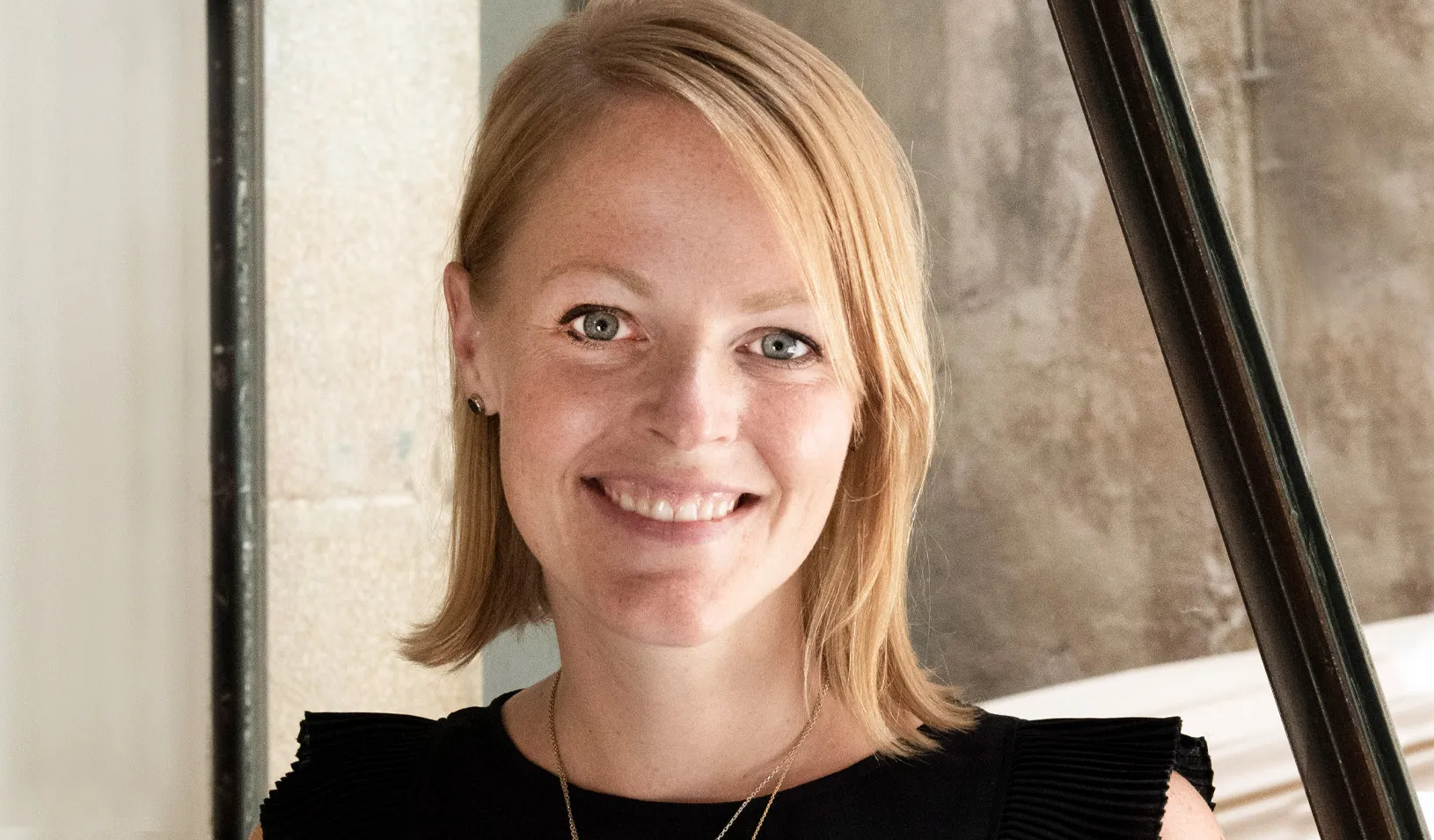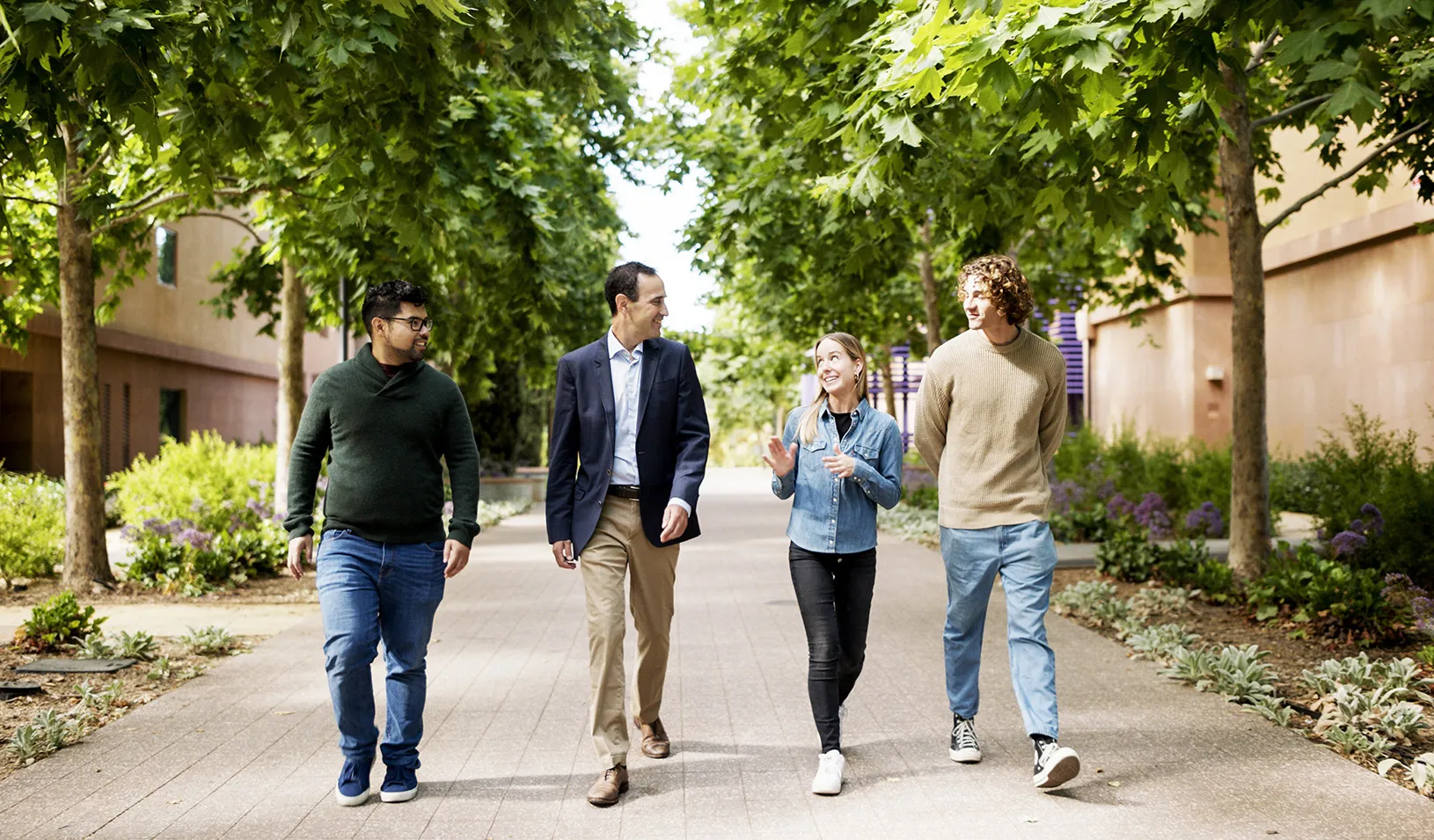Leveling Up: Enabling More Students to See Themselves as PhDs
Stanford GSB’s predoctoral fellowship is helping the next generation of academics jumpstart their careers — and bringing needed diversity to the professorship pipeline.
October 11, 2021

Helping students see themselves as PhDs speaks to the core of what teachers do. “We’re helping someone project a future,” says Charles Lee.| Yifan Wu
How do aspiring PhD students apply business principles to their own academic careers? For many, the answer, increasingly, is a predoctoral residency like Stanford GSB’s Research Fellows Program.
In the two-year program, prospective PhD students acquire skills and experience by assisting Stanford GSB faculty with research and taking graduate-level coursework. The hope is that meaningful faculty mentor relationships will lead to valuable research experience and highly prized recommendation letters — which, along with a transcript showing success in Stanford’s rigorous courses, will culminate in a compelling application to PhD programs.

Juliette Coly|Toni Bird
Such applications have to be strong because competition for PhD programs is fierce. The average top business PhD program admits only 15 to 25 students in any given year. With hundreds of students applying, admission rates can be as low as 5%.
That’s why pre-docs have become much more common over the past decade, serving as a kind of competitive advantage in cutthroat PhD admissions. “It’s a way to have another asset in your application,” as Juliette Coly puts it. A Paris native, Coly has been considering an economics PhD since before she graduated from France’s elite École normale supérieure in 2020; she is now in her second year of the Research Fellows Program.
For Coly and others like her, there’s no shortage of pre-doc programs; the number has ballooned in recent years, especially at top universities. But the Stanford program distinguishes itself by being one of the few to have had a clear diversity objective since its inception.
The initiative aims to make PhD programs more accessible for underrepresented groups, including women and people of color. At U.S. business schools, only 28% of students and 7.5% of faculty are underrepresented minorities (Black, Indigenous, and Latinx), according to recent data from the Association to Advance Collegiate Schools of Business. And among 89 U.S. business school doctoral programs, the share of underrepresented minority students drops to 17%. In 2019–20, women made up 35% of full-time B-school faculty and 41% of business doctoral students.
At Stanford GSB, the stats are even more dismaying: Of 84 tenured faculty, only 5 are from underrepresented minority groups (6%) and 14 are women (17%).
The Research Fellows Program was started in 2013. “We’d been thinking hard for a long time about how to diversify the pipeline to PhD programs, which effectively is the pipeline to faculty,” says Dianne Le, assistant dean of Stanford GSB’s PhD program. “Simultaneously, there was increasing need for faculty research support and growing attention to DEI needs across all our schools.”
Three fellows composed the first cohort in 2014, and 23 have followed since. This year, an unprecedented 20 fellows were selected, in an expansion to meet faculty demand for research support. Seventeen former fellows have entered PhD programs. The first alums are only now completing their doctorates, so it remains to be seen who will land a faculty position. “We continue to root for them,” Le says.
The program aims to prepare students for doctoral programs, but first it helps them determine whether that’s even the right career goal. “The decision to pursue a doctorate is a big one,” Le notes. “Learning whether you’re passionate about and enjoy research is incredibly valuable in this decision-making process.”
The First Steps of a Long Journey

Zanele Munyikwa|Toni Bird
Zanele Munyikwa was a Duke computer science major who became drawn to the emerging field of computational social science. In 2015 she joined the second cohort of Research Fellows. The decision wasn’t easy; she had applied to computer science doctoral programs at the same time. “The PhD’s already a long journey, and a pre-doc lengthens that by two years,” she says. “And you’re taking an earnings hit compared with people who go straight into the workforce. But I felt this combination of coursework and research would help me figure out what I was interested in.”
Now she’s starting her fifth year of an information technology PhD at MIT Sloan School of Management, studying the economics of digitization and technology. “When I started the Research Fellows Program, I had only vague ideas about what topics I was interested in. The second time I applied to graduate school was much more targeted toward a specific set of research topics and career goals.”
Coly, who will finish the program in June, has explored different facets of economics at Stanford and is still contemplating pursuing a PhD. “It will depend on whether I find something I am very curious about,” she says, noting that she recently took a liking to econometrics after working with Professor Guido Imbens.
“Researchers need to really love what they’re doing.” Coly says the program is especially beneficial for international fellows (who constitute about half the cohort this year); in France, it’s much less common for undergrads to get the research experience valorized by PhD admissions committees or to receive letters of recommendation from well-known names in the field.
Yet the research itself is far from glamorous. “The research assistant is not always doing the most exciting work,” Coly says — things like cleaning data, manual work, checking inconsistencies. “But it has to be done.” And working alone at home for the past year during the pandemic was less than ideal. But she enjoyed “seeing how researchers worked, their rigor, the ways they think.” (She also took full advantage of Stanford’s recreational facilities: “Playing tennis and going to the swimming pool was really good for my mental health.”)
Some fellows attain marketable accomplishments, such as coauthoring a published paper. “It takes time for most PhD students to get to that point, so it is pretty spectacular that fellows are authors,” says Emily Teitelbaum, associate director of the Research Fellows Program. “This is a true mentorship program — as one of our faculty has said, the fellow should be getting more out of it than the faculty.”
For accounting professor Charles M. C. Lee, it wasn’t immediately clear that the fellows would be useful to his work. He was accustomed to PhD research assistants who were similar to apprentices, gradually working up to become coauthors over several years. “I thought I’d be mostly investing in them, teaching them how to do something, but not getting any returns,” he says.
But last year he had trouble filling a specific role on a research project. He needed someone who was fluent in Mandarin Chinese, including colloquialisms and internet humor, and also familiar with business transactions. To Lee’s surprise, the program had a match. The fellow’s work contributed to a study that won the best paper award at its first conference, Lee notes proudly, adding that he would happily write the fellow a letter of recommendation.
Lee believes he could have benefited from a similar program when he was getting started. “I jumped in with two feet into a PhD program without knowing anything,” he recalls. “I didn’t have a clue, didn’t have any preparation, didn’t even know what research was.”
He praises the program for giving fellows more insight than he had. “PhD study is a big life commitment. Many people dive in without really having any taste for or understanding of it. This is definitely a good way to size up whether it’s worthwhile to invest five or six years to get a PhD.”
Degrees of Progress
Munyikwa says she was impressed by how much the program afforded high-touch faculty interactions, the most she’s received in her academic career: “The faculty are, of course, very busy, but I got a lot of time with them for things like conventional wisdom and understanding the lay of the land of research and academia. That ended up being a major benefit when I became a graduate student, because academia has a lot of unwritten rules and norms and a hidden curriculum.” She’s also grateful that the program provided a community of fellows, faculty, and students as a resource. “It’s a big challenge for minority students to build their network.”
On issues of diversity, Munyikwa recognizes the influence that business schools wield. “People who are leading corporations have a lot of power in shaping what the future looks like,” she says. “How business students think about the world, how diverse corporate America is — all these things are tied into our education systems. I’ve thought about it a lot, the importance of having somebody who looks like me in a faculty position and the benefit I’ve gotten from having diverse faculty.”
Helping students from diverse backgrounds envision themselves as PhDs speaks to the core of what teachers do, Lee notes. “As teachers, we’re helping someone project a future. It’s always a challenge to see the potential and not just what’s there. That may be more salient, perhaps, when we’re admitting students who have a different background.”
Whether pre-doc programs actually increase diversity in the field is still an open question; a recent online survey of nearly 260 pre-docs from selected schools found near gender parity, but more than 50% identified as white. The Research Fellows Program is redoubling efforts to attract diverse candidates, with targeted recruiting at historically Black colleges and universities and a collaboration with PREDOC.org, a consortium of universities working to expand the PhD pipeline.
But as Munyikwa notes, much more needs to be done, and distinct challenges remain for those from underrepresented groups who do become professors — and are often one of a few faculty members who are women or people of color. “Part of having a more diverse academia is not just building the pipeline but also doing a set of things to make the environments inclusive. For me, it’s weighing those two things: the importance of having more diversity and the cost that you as an individual take on when you decide to enter those spaces. It’s a very personal choice and one I’m still trying to make.”
For media inquiries, visit the Newsroom.
Explore More
Erin Nixon Joins Stanford GSB as Assistant Dean of Admissions

Nia Rose Froome, MBA ’23: Making Local, Fresh Food Available for All

New Research Fund Promotes Responsible Leadership for the Next Century
